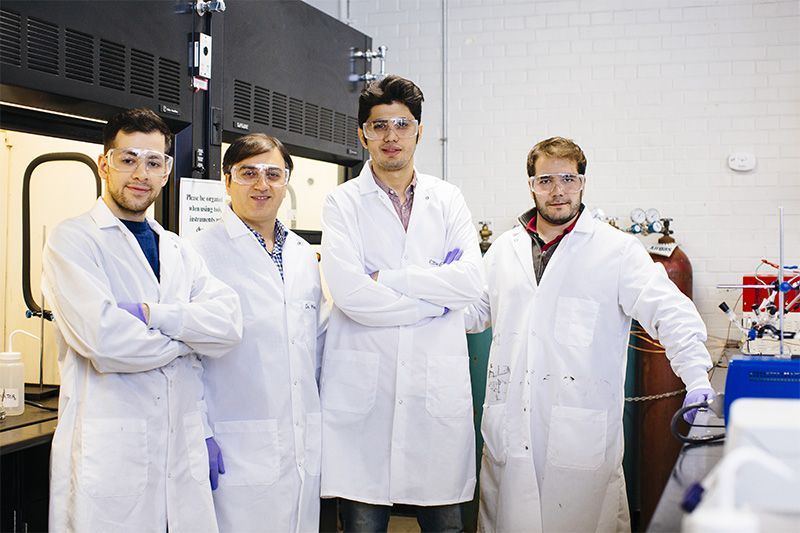Assistant Professor Publishes Research on High Efficiency Renewable Production of Hydrocarbons from Carbon Dioxide

As modern society moves to low-carbon emission, renewable production of chemicals becomes a crucial task to achieve for the industry. In this transition, electrocatalytic conversion of carbon dioxide (CO2) to value-added chemicals driven by solar energy offers an emerging pathway for a sustainable, large-scale production of chemicals in different levels from intermediate- to end-use products.
Mohammad Asadi, assistant professor of chemical engineering in Armour College of Engineering’s Department of Chemical and Biological Engineering, addresses how the technical and fundamental difficulties related to this technology prevent high-rate generation of a desired chemical in an energy-efficient manner. In a recent journal article published in ACS Nano titled “Oxygen Functionalized Copper Catalyst as a Highly Active and Methane Selective Catalyst for the Electrochemical CO2 Reduction Reaction,” Asadi’s research team introduces a sustainable and effective way to generate methane—the main component of natural gas—using a structure-engineered copper nanocatalyst.
Asadi explains that roughly 86 percent of global energy is supplied by burning fossil fuels, which are limited in source and result in negative environmental impacts due to the release of a significant amount of carbon dioxide into the atmosphere.
He shares, “A key goal of my research is to develop cost-effective and energy-efficient sustainable energy technologies to replace fossil fuels.” To achieve this goal, Asadi’s research team has a dual focus: (i) conducting fundamental research in the various aspects of functional materials development, surface chemistry, and photo/electrocatalysis science along with (ii) leading innovation in the area of device fabrication.
Asadi notes the challenge of developing earth-abundant and inexpensive compartments of the electrolyzer that can work together as a stand-alone device to produce chemicals with comparable—or even at a lower—cost than currently available technologies.
A major part of this work has been conducted alongside Mohammadreza Esmaeilirad (CHBE Ph.D. student) and Alireza Kondori (CHBE Ph.D. student). In addition, Andres Ruiz Belmonte (M.S. CHE ’18), Shubhada Mahesh Khanvilkar (M.S. CHE 4th Year), and Erin Efimoff (CHE 3rd Year) have also contributed to these research efforts.
Asadi says, “Our developed, proof-of-concept-lab-scale flow electrolyzer produces two times higher the amount of methane than that of state-of-the-art existing technologies, and a 10 times greater amount of solar to fuel efficiency compared to natural photosynthesis using simulated, one-sun illumination.”
He shares that his research team’s overall goal is to develop a large-scale, inexpensive flow electrolyzer that can effectively produce high-energy density fuels and chemicals from carbon dioxide. “Our next step is to further advance this process toward the production of multi-carbon products such as ethylene and alcohols,” adds Asadi.
This research was performed in collaboration with Illinois Tech’s College of Science and the Department of Mechanical and Industrial Engineering at the University of Illinois at Chicago.
Photo [left to right] Alireza Kondori (CHBE Ph.D. Student), Mohammad Asadi, Mohammadreza Esmaeilirad (CHBE Ph.D. Student), and Andres Ruiz Belmonte (M.S. CHE ’18)




